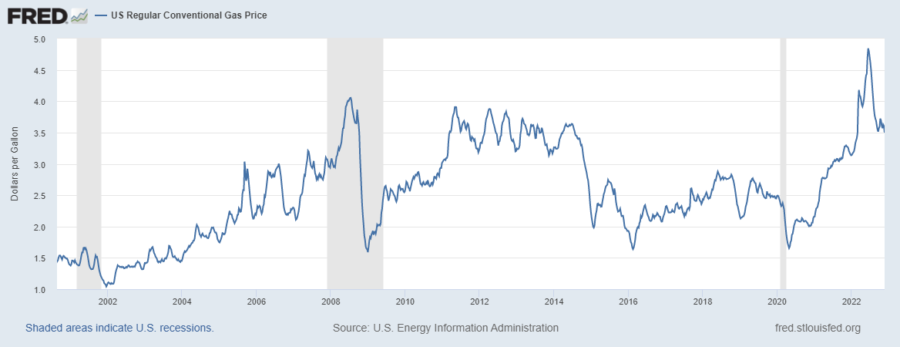It should have been a layup for the Republicans. It should have been incredibly easy. The Saudis refused to agree to President Biden’s request that they increase their crude oil production to bring down global gas prices and alleviate a major burden on Americans, with the rest of OPEC following them. President Biden’s approval rating rested at 42.3% around the time of the election, and yet, when the election results came, Democrats maintained control of the Senate, and the Republicans barely managed to take the House. Even now, Democrats could gain a seat in the next two weeks as Senator Raphael Warnock faces off against Herschel Walker in Georgia. Trump nominees across the country floundered and failed, suffering humiliating defeats despite claims of supposed strength. It spells serious problems for the Republicans going forward.
To understand the midterm elections and their significant results, it is critical to understand the context of the results as well as how previous midterms have gone for the two parties. During the midterms, the ruling party – meaning the party that controls the White House – tends to do poorly during their midterm election.
During former President Obama’s first midterm election, the former president’s party lost 63 seats in the House of Representatives and six seats in the Senate, throwing aside much of their previously established political strength. Four years later, the Democrats went on to lose 13 seats in the House and nine seats in the Senate, further weakening Democratic control. Under Trump, the trend continued, with the former President from New York losing 40 seats in the House, but gaining two seats in the Senate in 2018, showing how the public rejected much of their agenda or wanted to restrict it to some extent. These historical trends are usually the determining or, at the very least, significant factor during a midterm election.
But in this election, Democrats outperformed their GOP counterparts and threw much of Trump’s supposed electoral power into the dirt. As of writing, the Republicans are projected to only hold 221 seats to the Democrats’ 214, putting any claim to a so-called red wave down. In the Senate, the current composition of the Senate rests at 50-50, leaving Democrats in control of the chamber for the next two years, and with Warnock possibly coming in to ensure Democrats have a far easier chance working in the smaller chamber. If Warnock succeeds, Democrats can choose to ignore either Sinema or Manchin, both of whom have stepped in the way of Democratic success in the Senate, and pursue a much bolder agenda going forward.
As for Trump himself, the Nov. 8 election was not a good day for his movement. Despite his claims of intense success, most of Trump’s endorsed candidates were incumbents and were already favored to win, making his actual influence negligible – and when it came down to candidates who were critical for the so-called red wave to materialize, Trump’s endorsed allies flubbed miserably.
Ten of his candidates for gubernatorial office lost, along with four candidates in the Senate’s races and eleven races in the House. Most notable among them was Mehemet Oz, the infamous Dr. Oz. Despite living in New Jersey, Oz moved down to trade upon his name to face off against progressive candidate John Fetterman, attempting to attack his health and fitness for public office. Despite an arguably underwhelming performance in a debate with Oz, Fetterman followed up by clubbing Oz at the ballot, beating him 51% to Oz’s 46. To put it another way, Trump’s endorsement is not what it used to be.

So, what does this mean in the long term? It can be difficult to say, as a lot can happen in two years. Perhaps nothing will change, and the economic challenges we face now remain as they are. That may be the best case scenario for Trump, but it should be worth noting that if the current status remains unchanged, the issue of abortion could come back to bite Republicans again, as much of the opposition to Republicans came from pro-choice advocates. However, another view is possible.
Instead of merely showing that the Republicans underestimated the issues of abortion and gun control—which they absolutely did—the current state of electoral affairs could instead be a sign that Biden and the Democratic Party could be in a position to do well in 2024. While inflation and gas prices are certainly an issue for many voters, those issues are not guaranteed to remain the same as they are currently.
Gas prices have begun to decline despite surging in 2020 and reaching a peak in June of this year and have continued to decline gradually. If this continues, one of the major talking points for the GOP will fall to the wayside, and the American public could retain a favorable opinion of the White House’s current occupant. Similarly, inflation will not be the same as it currently is by 2024, and though it could remain high, it is unlikely that it alone will determine the fate of the presidency. And considering how much Trump has floundered with his candidate choices, it should be surprising if Republicans chose a more Floridian candidate than the current occupant of Mar-A-Lago.
















